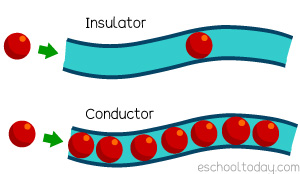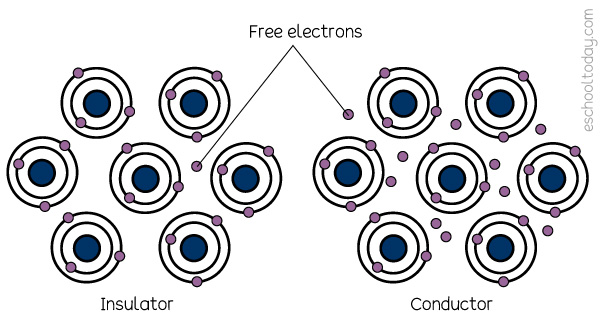- Electricity
What is a conductor?
A conductor is a material that allows electricity to pass through them. There are more free electrons in the atoms of conductors and free to move from one atom to another. As a result, electric charges are free to move from place to place. There is less resistance to the movement of the electrons.
Examples of good conductors
Aluminum, copper, gold, water, and people are examples of conductors. This is why electricity producers use copper and aluminum wires to carry power from generating plants to consumers. Conductors also allow heat energy to pass through them.

Think of it this way:
A conductor is like a tube with many loose balls. If you push one other loose ball into one end, there will be a knock-on effect until one pops out at the other end.
Conductivity is the ability of a material to conduct electricity. Such a material is said to have high conductivity.
The illustration below shows the difference between free electrons in insulators and conductions. Atoms are structurally different in every material. Note that this is for illustration purposes only.

Insulator
An insulator is a material that does not allow electricity to pass through it. The electrons in the atoms of insulators do not freely move from atom to atom. As a result, electric charges do not freely move from place to place. There is more resistance to the movement of the electrons.
Examples of good insulators
Rubber, plastics, wood, and paper are all great examples of insulators. These materials are also poor conductors of heat energy.
